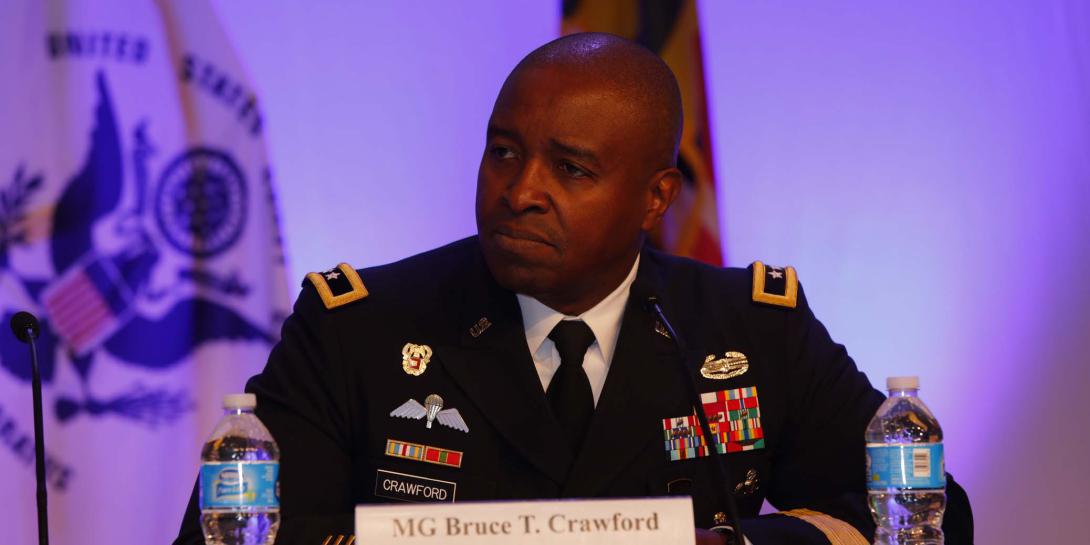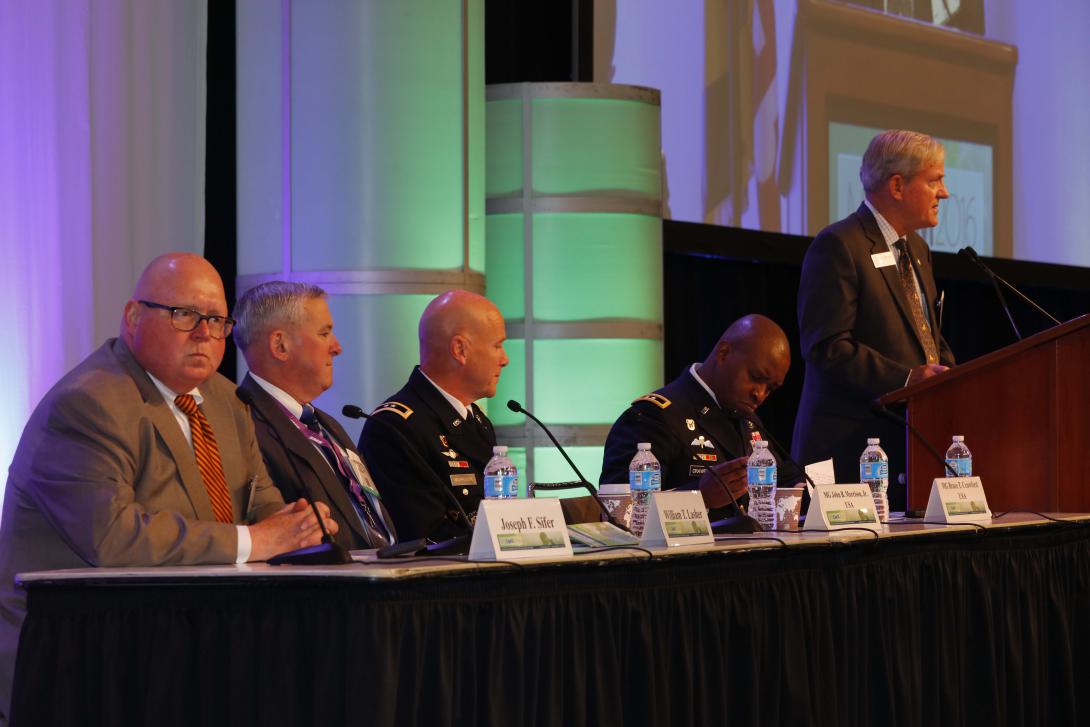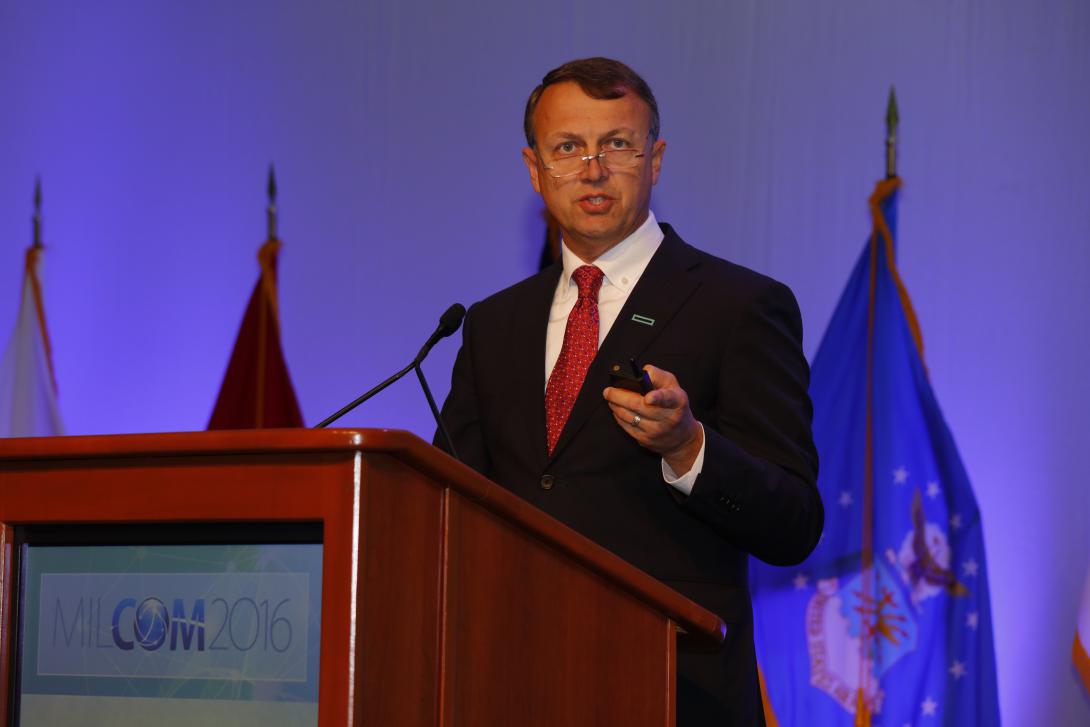Cybersecurity Crucial to Military Communications Even With Constrained Budgets
Cybersecurity and controlling the electromagnetic spectrum, along with several years of continuous combat, are among the challenges for military communications, according to speakers at the second day of MILCOM 2016, taking place in Baltimore and co-hosted by AFCEA International and the Institute of Electrical and Electronics Engineers, or IEEE.
The electromagnetic spectrum—and controlling use of and access to it—is key to the future of warfare, Maj. Gen. Earl Matthews, USAF, (Ret.), former director of cyberspace operations and chief information security officer for the Air Force, told conference attendees.
3 components will be first order of battle for future: command of air, command of space and command of the electromagnetic spectrum, #MILCOM
— Sandra Jontz (@jontz_signalmag) November 2, 2016
Attaining supremacy in the realm of electromagnetic spectrum should drive emerging technologies that will give the U.S. military a technical edge on the battlefield, said Matthews, now vice president for Enterprise Security Solutions, U.S. public sector, Hewlett Packard Enterprise
Matthews: At the height of the #coldwar, U.S. concerned about electromagnetic pulse. 'We have to get back to that to have reliance" #MILCOM
— Sandra Jontz (@jontz_signalmag) November 2, 2016
He cited six crucial characteristics that matter for cyber situational awareness. “Breaches are inevitable, cyber situational assessments have to be ongoing, automation is going to be key and you have to have analytics to reduce the time to mitigate the damage,” said Matthews. The government needs the solutions at the speed of cyber, working to overhaul its notoriously slow acquisition processes to get there.
6 six key characteristics of #cyber: speed, resiliency, intelligence, integration, analytics and expertise, Matthews says #MILCOM
— Sandra Jontz (@jontz_signalmag) November 2, 2016
Matthews said the need for speed drives many of the federal government’s requirements for cyber solutions, tying into the three-day military communications conference's theme: Securing Communications at the Speed of Cyber. “Speed is important, but we have to remember what is behind the speed. Really, it’s all about the people that we are trying to effect,” he said.
Software defined weapons and radios will be cheaper to modernize, but is the military postured to thrive in the new environment? #milcom
— Sandra Jontz (@jontz_signalmag) November 2, 2016
A panel on Wednesday morning focused on how U.S. military troop readiness has become a critical challenge after 15 years of continuous combat on multiple global battlefields.
In spite of advances in communications, networking and other computer technologies, efforts to sustain troops and equipment have taken a toll on training in particular, said Maj. Gen. Bruce Crawford, USA, commanding general of the U.S. Army Communications-Electronics Command (CECOM).
For the next fight for U.S. forces, the first one to the white board with the best idea wins, MG Crawford of @CECOMAPG says, #milcom
— Sandra Jontz (@jontz_signalmag) November 2, 2016
The days of separate strategic networks and tactical networks are long gone, said Maj. Gen. John Morrison Jr., USA, commanding general of U.S. Army Cyber Center of Excellence and Fort Gordon.
Days of strategic networks and tactical network are long gone, MG Morrison @ArmyCyberCoE says. All must be integrated capabilities #MILCOM
— Sandra Jontz (@jontz_signalmag) November 2, 2016
The Army’s current training paradigm is archaic, Gen. Morrison said. “We train to the box not to the network. We can’t have folks trained in silos.” Leaders are looking to turn that paradigm on its head, he said, and borrow a training methodology from cyber schools. In other words, he said, train to the network so that no matter what box is put in front of troops, they’ll understand the networking.
Training for @USArmy soldiers is 'archaic,' MG Morrison from @ArmyCyberCoE says. They are 'trained to the box, not to the network - #MILCOM
— Sandra Jontz (@jontz_signalmag) November 2, 2016
William Lasher, deputy chief of staff, G-6, U.S. Army Forces Command, stressed the need for maneuverability for U.S. military forces.
.@USArmy forces need maneuverability in #spectrum, #satellite constellations, #Transportation, to name a few, Lasher says at #MILCOM
— Sandra Jontz (@jontz_signalmag) November 2, 2016
The last panel of the day discussed the speed of acquisition and adopting technology, the next big research and development field for the military.
As technologies become even semi-mature, enemies of U.S. are quick to adopt and adapt them, @CERDEC's Henry Muller says at #MILCOM
— Sandra Jontz (@jontz_signalmag) November 2, 2016
next big R&D field within military: quantum information sciences, says Dale Ormond at #MILCOM
— Sandra Jontz (@jontz_signalmag) November 2, 2016
In acquisition, it is 'absolutely possible to go faster,' says @ARCYBER Ronald Pontius. 'We have to be committed to getting there.' #MILCOM
— Sandra Jontz (@jontz_signalmag) November 2, 2016







Comments